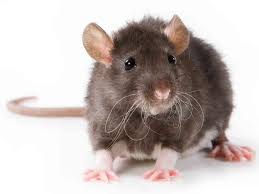A
abujagirl
Guest
Male mice use ultrasonic "love songs" to woo females, using different tunes when they smell but do not see a female and when they lay eyes on them, scientists said on Wednesday.
The research was published in the journal Frontiers of Behavioral Neuroscience.
"I do think there is more going on with animal communication than we humans have been attuned to.”
"There is a clear communication signal in the mouse songs and not just random sequences of vocalisations," Duke University neurobiology Prof. Erich Jarvis said.
The researchers compared the songs to the courtship songs of male songbirds, although mice are more limited in their ability to modify their tunes.
They discovered that mouse songs are a sequence of utterances or syllables, strung together, at times with a tempo.
"Those songs are really high in pitch, above 50 kilohertz, and are not audible to humans.
“When we pitch them down and play back at real speed, it sounds like a bird," Duke postdoctoral fellow, Jonathan Chabout said.
Scientists have known for decades that mice make such sounds, like when a pup calls for its mother, and have worked to better understand what they communicate.
The researchers exposed male lab mice to different situations, recorded their songs, then analysed them.
They said findings showed that males sang more complex and louder songs when they were able to smell the urine of a female mouse but not actually see that potential mate.
They said with the female present, the males changed their tune, with longer, simpler songs.
"I think the mice are saying with the complex songs, 'Pay attention to me, I'm here, come to me, and see how my complex song sounds great,' as a measure of his health.
“Then the females assess it, and he simplifies the song when she is directly next to him in order to spend energy to try to mate," Jarvis said.
The researchers played the two song types to sexually mature females, finding they preferred spending time next to speakers playing the complex song.
"Whether or not it's a specific syllable type or something else in the complex song, we don't know," Chabout said.

The research was published in the journal Frontiers of Behavioral Neuroscience.
"I do think there is more going on with animal communication than we humans have been attuned to.”
"There is a clear communication signal in the mouse songs and not just random sequences of vocalisations," Duke University neurobiology Prof. Erich Jarvis said.
The researchers compared the songs to the courtship songs of male songbirds, although mice are more limited in their ability to modify their tunes.
They discovered that mouse songs are a sequence of utterances or syllables, strung together, at times with a tempo.
"Those songs are really high in pitch, above 50 kilohertz, and are not audible to humans.
“When we pitch them down and play back at real speed, it sounds like a bird," Duke postdoctoral fellow, Jonathan Chabout said.
Scientists have known for decades that mice make such sounds, like when a pup calls for its mother, and have worked to better understand what they communicate.
The researchers exposed male lab mice to different situations, recorded their songs, then analysed them.
They said findings showed that males sang more complex and louder songs when they were able to smell the urine of a female mouse but not actually see that potential mate.
They said with the female present, the males changed their tune, with longer, simpler songs.
"I think the mice are saying with the complex songs, 'Pay attention to me, I'm here, come to me, and see how my complex song sounds great,' as a measure of his health.
“Then the females assess it, and he simplifies the song when she is directly next to him in order to spend energy to try to mate," Jarvis said.
The researchers played the two song types to sexually mature females, finding they preferred spending time next to speakers playing the complex song.
"Whether or not it's a specific syllable type or something else in the complex song, we don't know," Chabout said.


